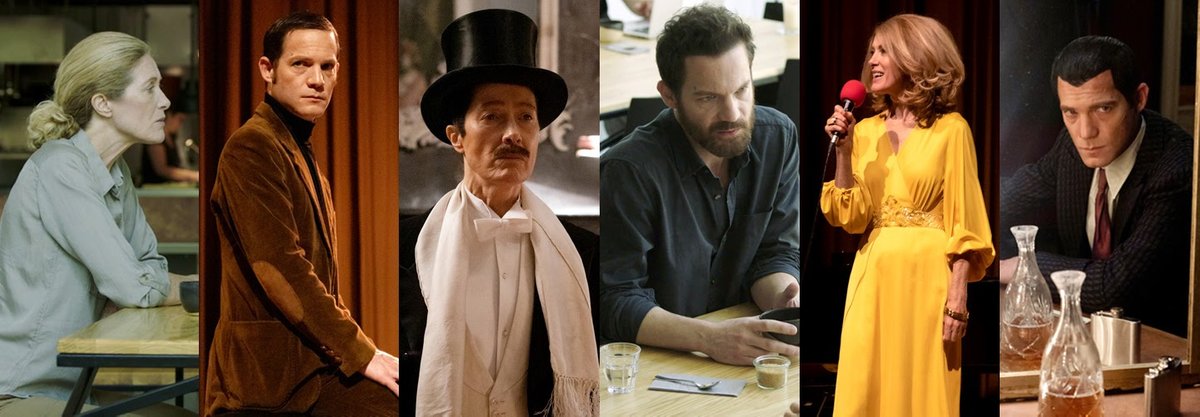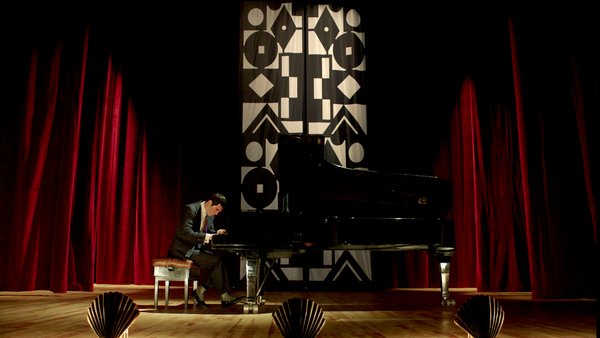From the Desk of…Dani Gal

Dani Gal, Three Works for Piano, 2020, still from video. Image credit: Dani Gal. Camera credit: Itay Marom.
In this interview, Dani Gal discusses his practice and current projects. Dani writes to us from Berlin about working with sound, cinema, stories, and documentation, to examine historical events that shape cultural memory, and to reflect on society in the present. Dani Gal is a 2020 Artis Grant Recipient. To learn more about Dani’s practice, we recommend visiting his website and reading about his new video project, commissioned by steirischer herbst ’20, Kirberg Motors, and Blood Mountain Projects, and supported by Artis. The work premiered at the steirischer herbstfestival in October 2020.
This interview was conducted in October 2020 as part of Artis’ series, From the Desk of…. In this series, we check in with artists, curators, and collectors about their recent projects, reflections on social distancing and quarantine, due to the COVID-19 pandemic, as well as how they are practicing, experiencing, and engaging with art.

Dani Gal, Three Works for Piano, 2020, stills from video. Photo credit: Ayala Gazi.
The premiere of your new film, Three Works for Piano, will take place at the steirischer herbst festival on October 4th. Tell us about this work.
The film examines the roles of silence, silencing, and listening in the politics of dominant national narratives. It looks at the ways in which socially accepted violence is both constructed and questioned through witness testimonies. Through testimony, the witness—who can be the victim, perpetrator or a bystander of a traumatic event—becomes a mediator between an event and the society that deals, or avoids dealing with, the implications of the event. The witness is a key figure in the discipline of historical trauma studies, an area that I researched in creating this film.
Three Works for Piano reconstructs three piano performances of the 20th century avant-garde: John Cage’s seminal work 4’33” (1952), performed in the late 1970s at the Tel Aviv Museum of Art, where the intended silence of the piece was interrupted by the audience’s spontaneous performance of a nationalist song; the radical American composer George Antheil’s confrontation of his audience with a loaded gun during a concert in Budapest in 1923; and the first documented art performance of a piano demolition by the Wiener Gruppe, which took place in Vienna in 1959. The three events function as hallucinatory allegories to contemplate the complex dynamics between the historical witness and society.
Throughout the film, the triangulation of performer/sound/audience forms a reflection on an event that took place in 2017 in Israel/Palestine, when a former Israeli soldier publicly testified about his violent arrest of a Palestinian man in Hebron three years earlier. The soldier’s testimony was discredited and denied by the state of Israel, and the soldier struggled to publicly acknowledge his own guilt. This led to a focus on the soldier’s moral ambiguity, and distracted the public’s attention from the actual victim of violence in the arrest.
What kind of research were you engaged in to develop this project?
Much of the research for this project was conducted during a residency with Blood Mountain Projectsin Vienna in 2019. At the residency, I studied the field of historical trauma, and theories about historical witness testimony. This knowledge was then applied in my film, and reflects my ongoing interest in victim-perpetrator relations—especially in the triangle of Palestinian/Jewish/German histories.
Three Works for Piano , specifically, brings together two areas of interest in my practice. The first relates to an understanding of oppressed/oppressor complexities through the lens of multidirectional memory. Multidirectional memory is a concept developed by historian Michael Rothberg, whereby the coexistence of historical and national narratives that are normally perceived as conflicting or competing with one another, in fact, challenge the theism of national narratives.
The second area of interest or method deals with relations between the art in the formalist sense and the political. By juxtaposing historical, artistic, or musical events, actions, or strategies with a given political reality, I examine and disrupt the cultural understanding and common readings of both.
Can you tell us more about this juxtaposition of art historical events and political realities?
I have been working with this idea as a method for some time. One example from my previous work is the slide installation, Failed to Bind(2013). In Failed to Bind , a collection of current affairs photos from different newspapers and magazines between the 1960’s and today, is brought together with a collection of statements made by visual artists in interviews made in the same period of time. The two collections are shown as slideshows next to one other; one side shows the texts and the other shows the images. The news photos are decontextualized from their reality and the artists’ statements are observed in relation to images of “real” events. Visually, the viewer experiences the two as connected. This connection between an artwork and a true, violent reality, introduces a new way of understanding and interpreting events.
InThree Works for Piano , I use the musical performances described above to illustrate the political dynamic between the witness and society. John Cage’s historic performance of 4’33” in Tel Aviv gives rise to questions asked in witness theory about what the silence of a witness may tell us. The idea about the significance of the silence of witnesses was originally developed by literary critic, Shoshana Felman. Felman suggests that the silence of the witness is a continuation of testimony by other means. The scene shows how a national collective is threatened by truth conveyed by a witness. The audience is uncomfortable with the silence in Cage’s piece, which is normally regarded as a metaphor for sorrow or mourning in music, and chooses to reject it by singing an optimistic, nationalistic song. In my film, I wanted to show how Cage’s famous attempt to liberate music with 4’33” , can be viewed as an oppressive experience for the performer, as well, and that the potential for violence is embedded in both the instrument and the audience.
In the scene that portrays the George Antheil performance, the pianist forcefully controls his environment. Reading this event through witness theory, Antheil is actively and vigorously creating a narrative by forcing his riotous audience to listen to his testimony. The pianist, here, again, in the role of the witness, faces the audience (society) and renders it captive by commanding it to listen. Recalling the Ancient Mariner in Samuel Taylor Coleridge’s poem, “The Rime of the Ancient Mariner”, the mariner (as metaphor for pianist/witness) delays guests on the way to a wedding feast to tell them of his misfortunes, demanding that he be listened to out of a personal need, as well as a sense of collective responsibility—an insistence from society to deal with its disturbing past.
In the third and final performance in my film, the focus is on the piano itself, the instrument, the medium that delivers the message, the testimony. By smashing the piano, the idea of an event without a witness comes into play. The testimony has to be destroyed because it exposes a truth that can undermine the state’s authority and legitimacy. I drew the idea of the destruction of the witness and collapse of testimony from post-Holocaust trauma-witness theories. This last scene, which concludes my film, brings the question of the legitimacy of the witness to the medium of film itself.

Dani Gal, Three Works for Piano, 2020, still from video. Image credit: Dani Gal, Blood Mountain Projects, and Kirberg Motors.
ADDITIONAL WORKS BY DANI GAL
- Excerpt of Fields of Neutrality (The Last Interview with Ludwig Mies Van Der Rohe) , 2019, HD video, 32 min.
- Excerpt of White City, 2018, HD video, 25 min.
- Trailer for Hegemon , 2017, HD video, 80 min.
- Excerpt of As from afar , 2013, HD video, 26 min.
- Excerpt of Night and Fog , 2011, HD video, 22 min.
- Historical Records, 2015-ongoing.
